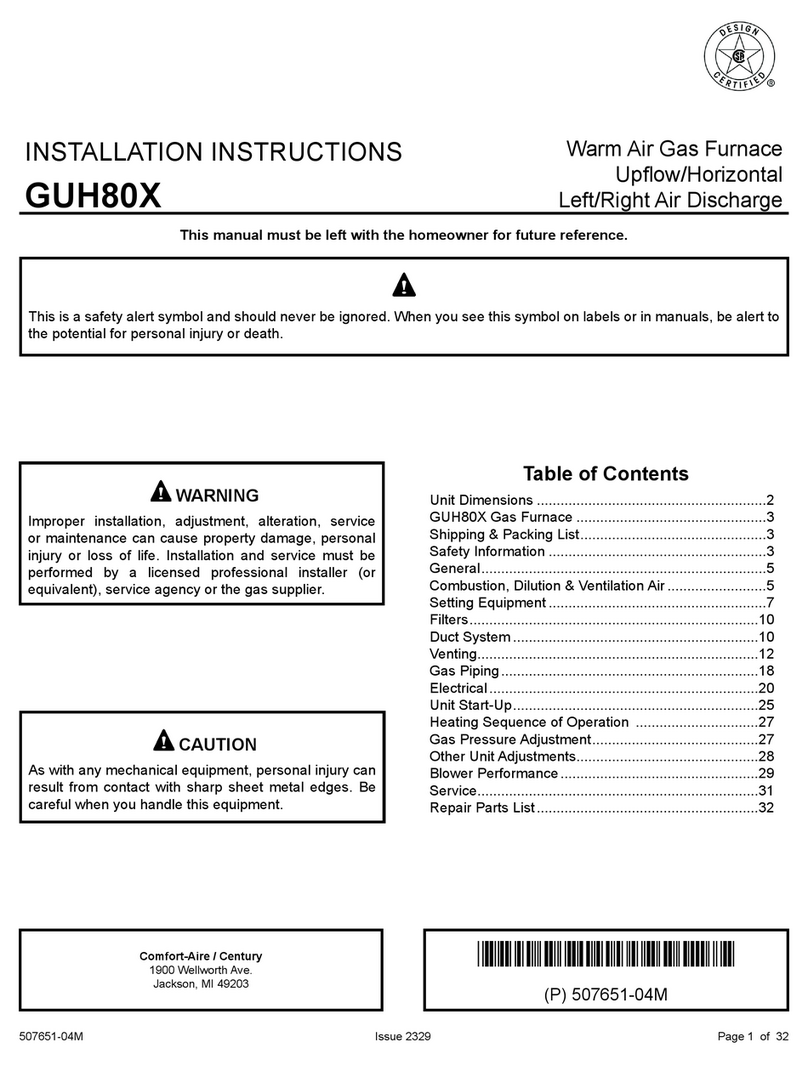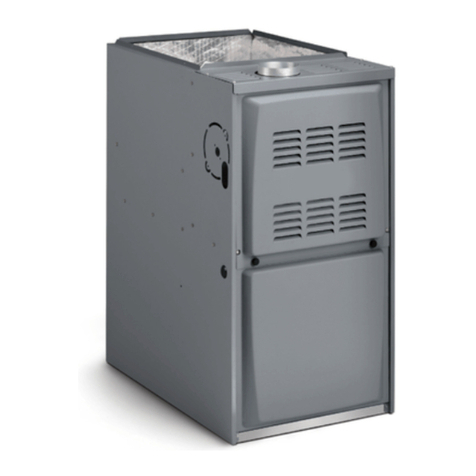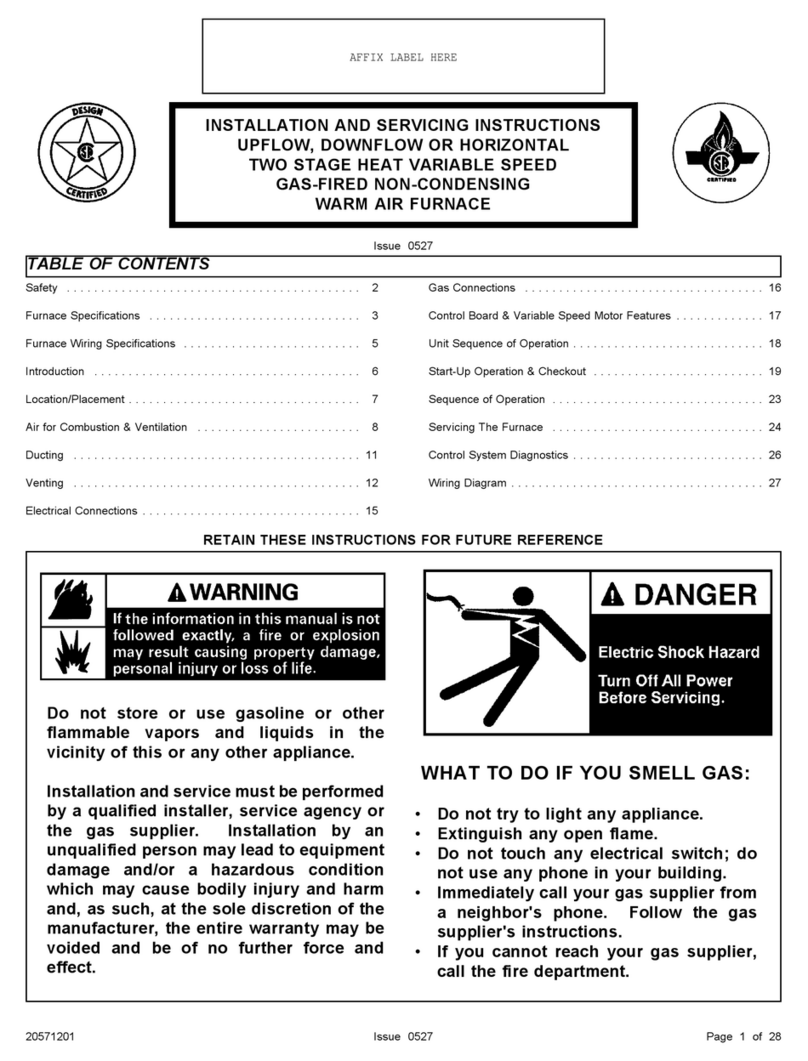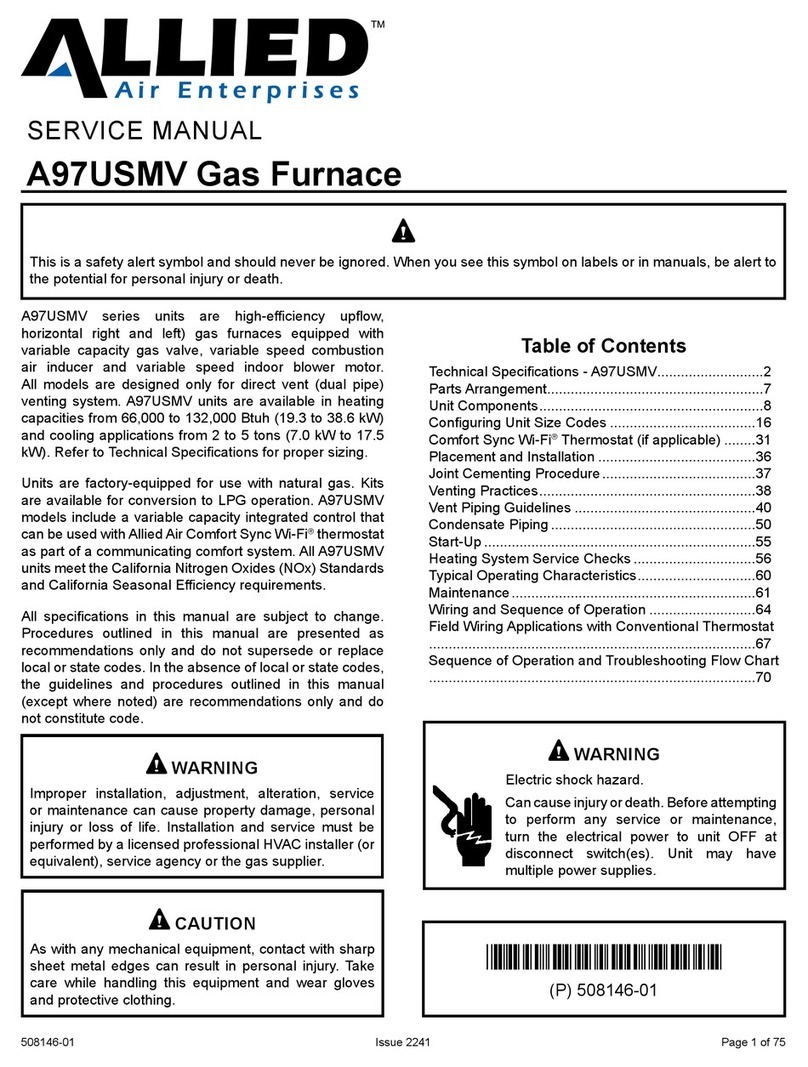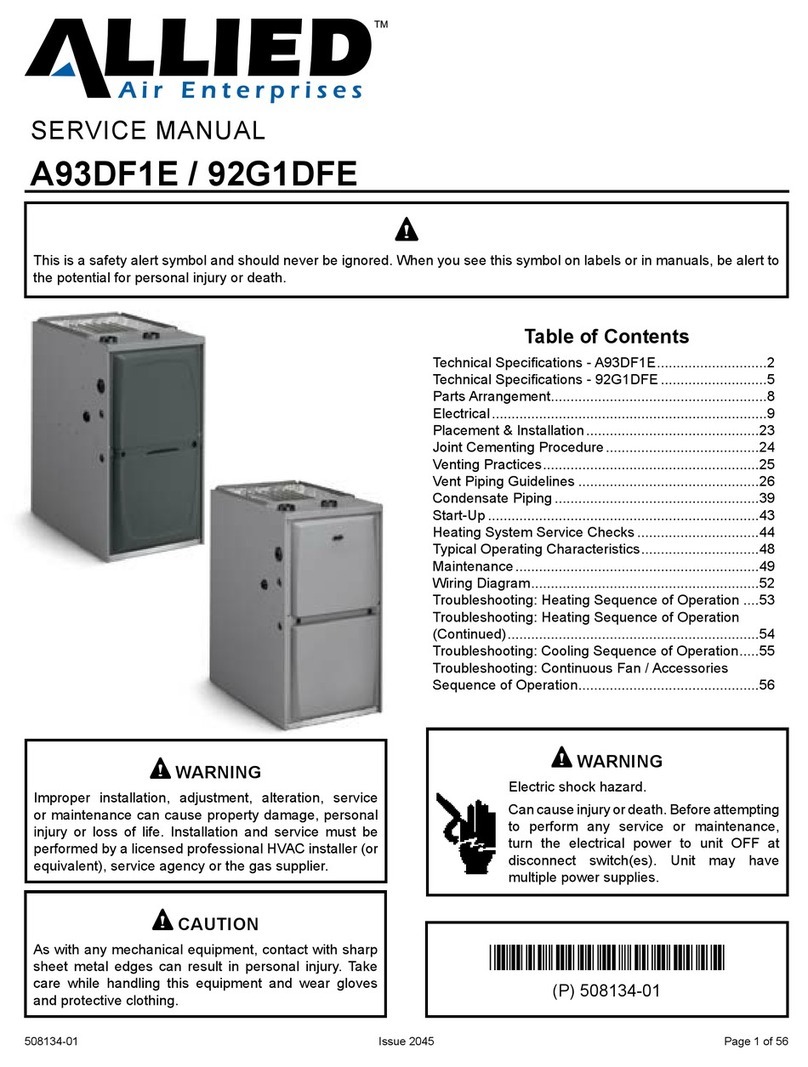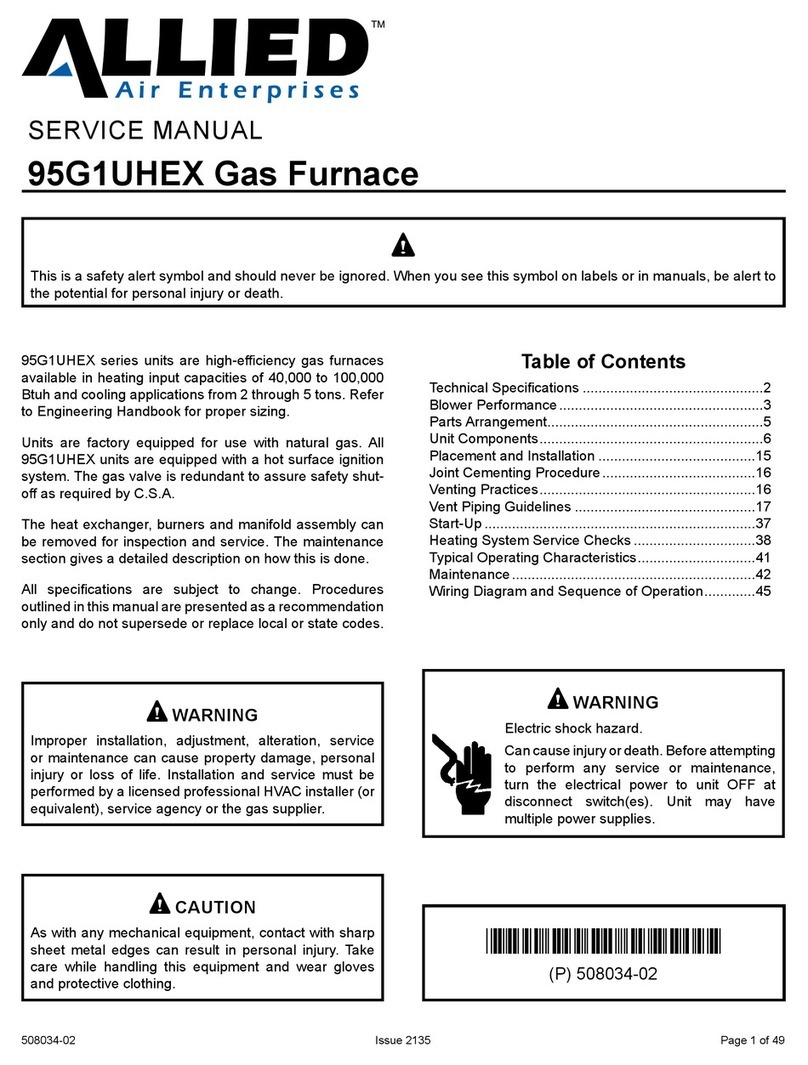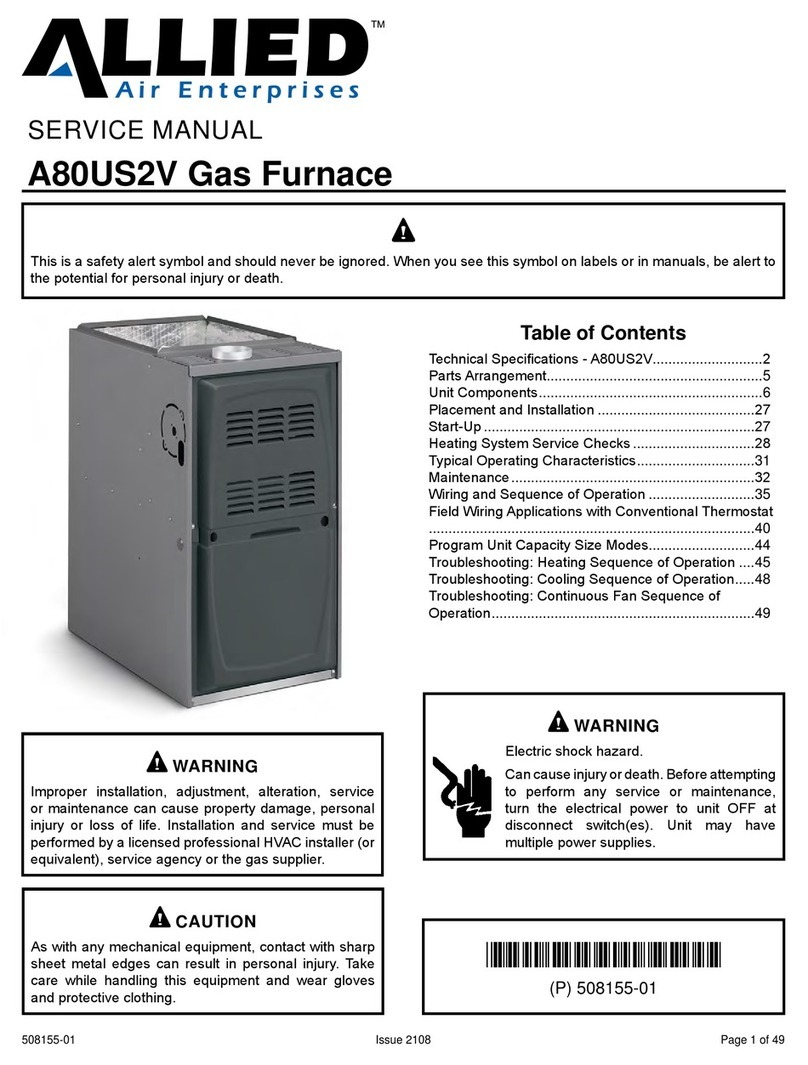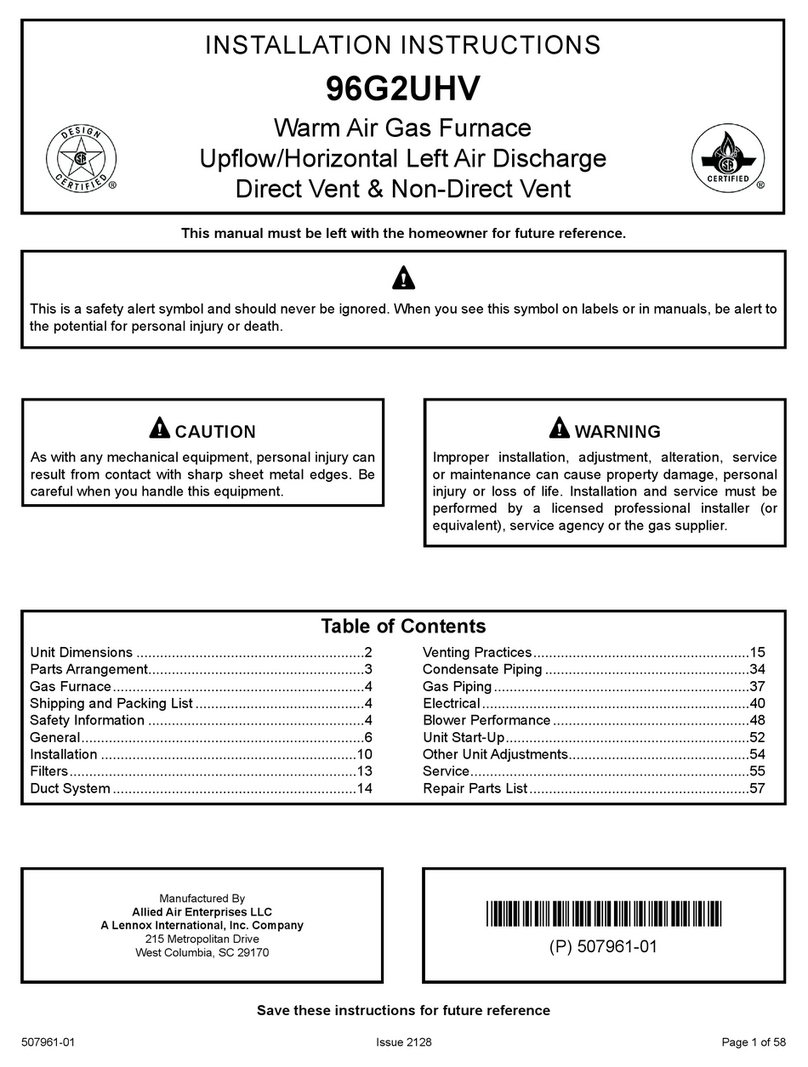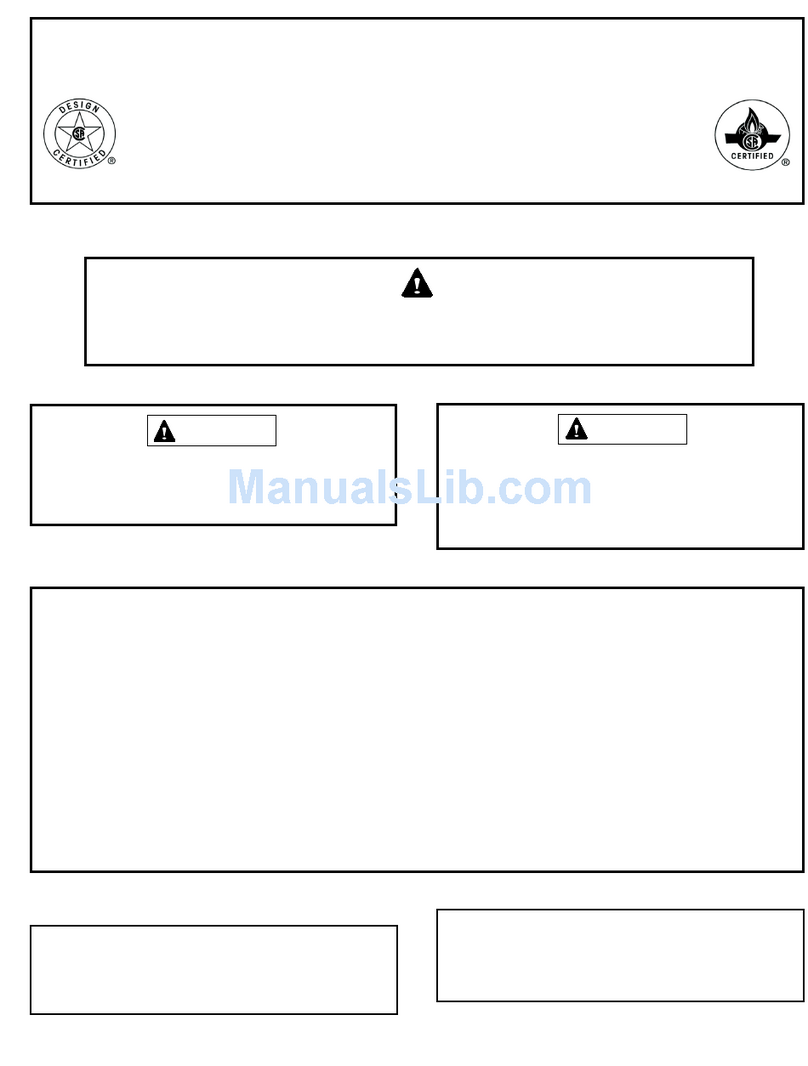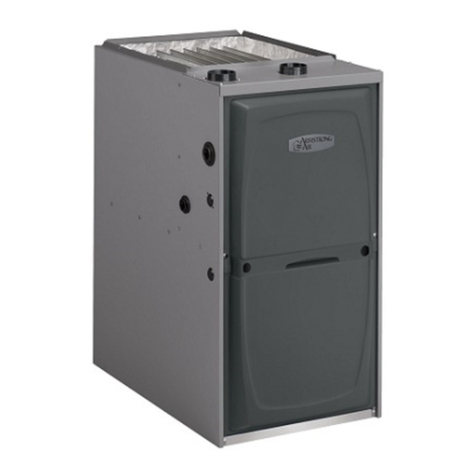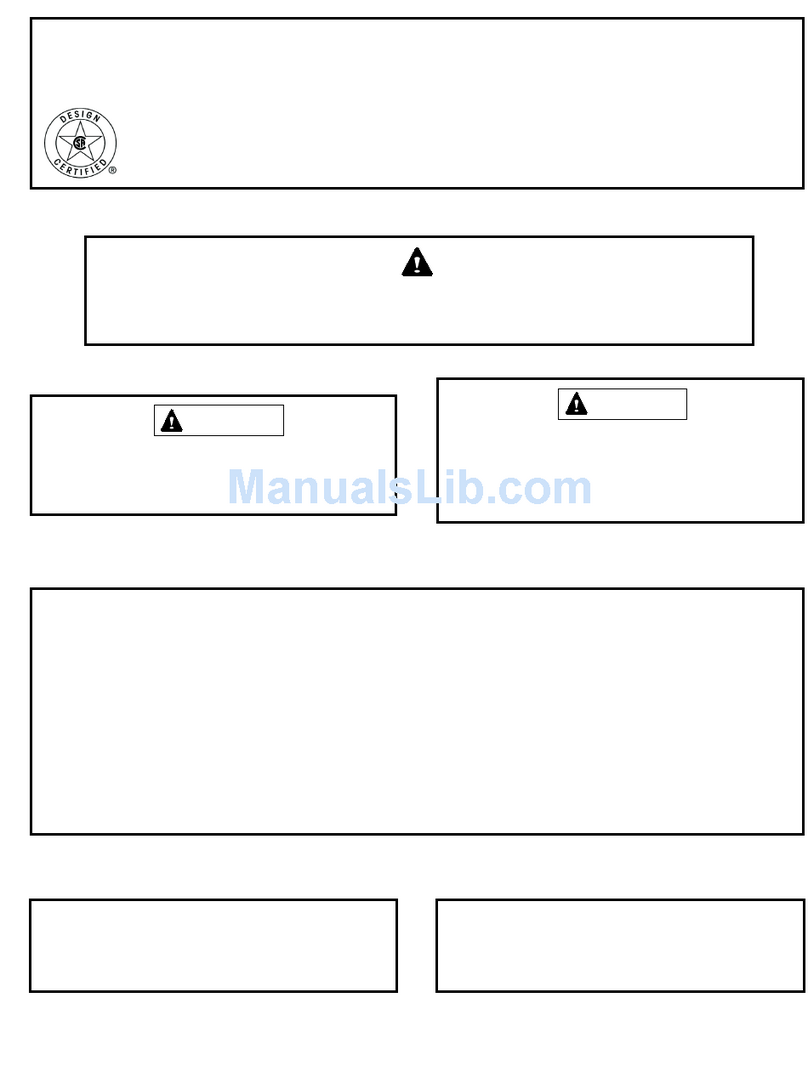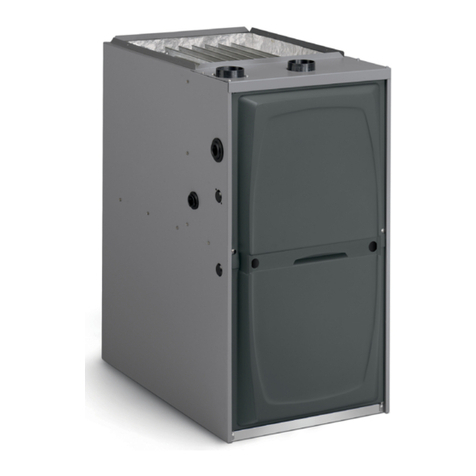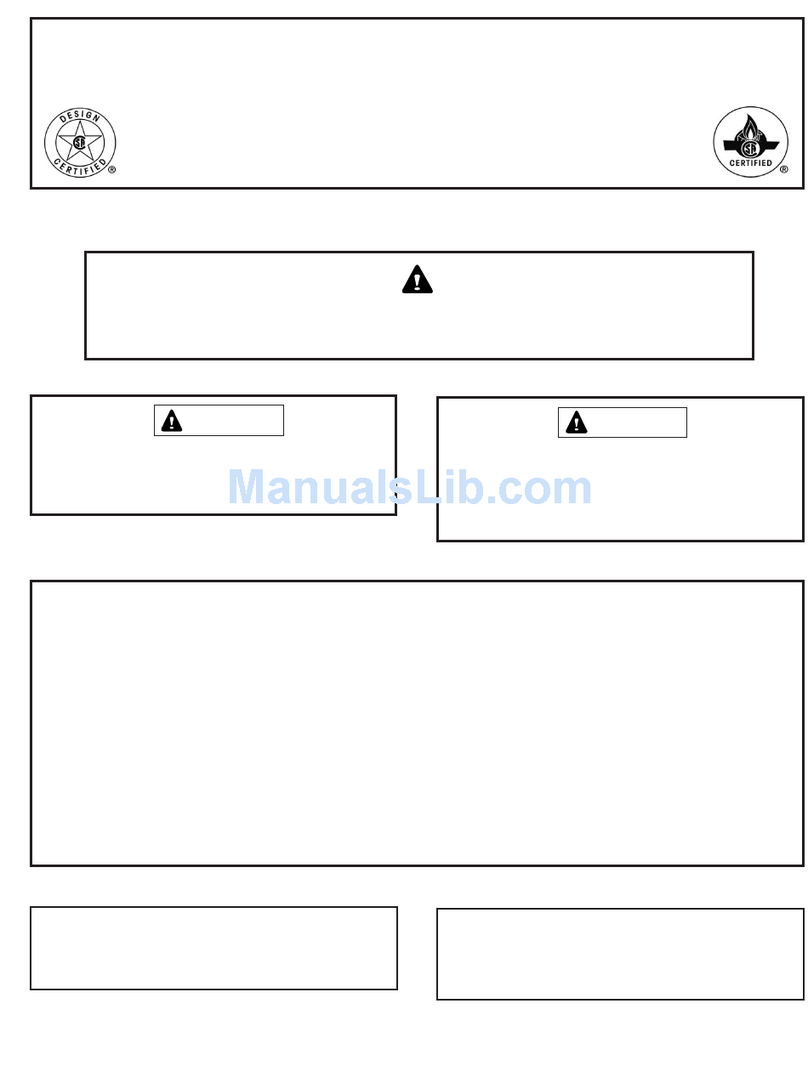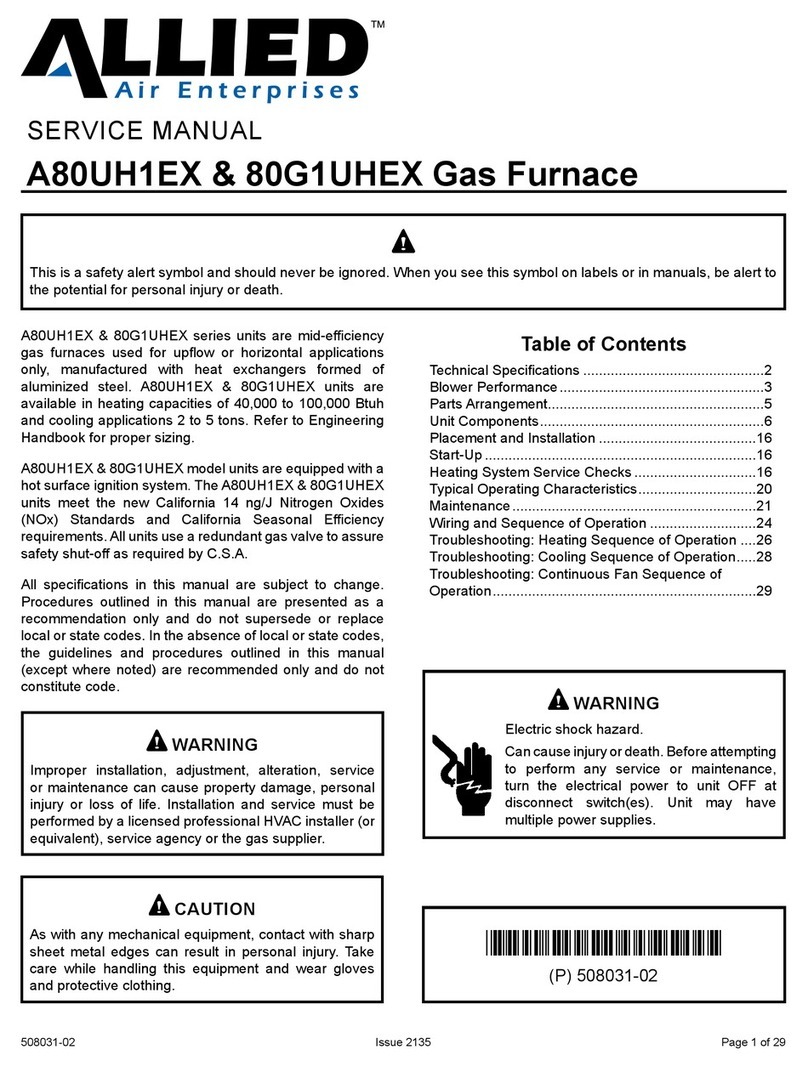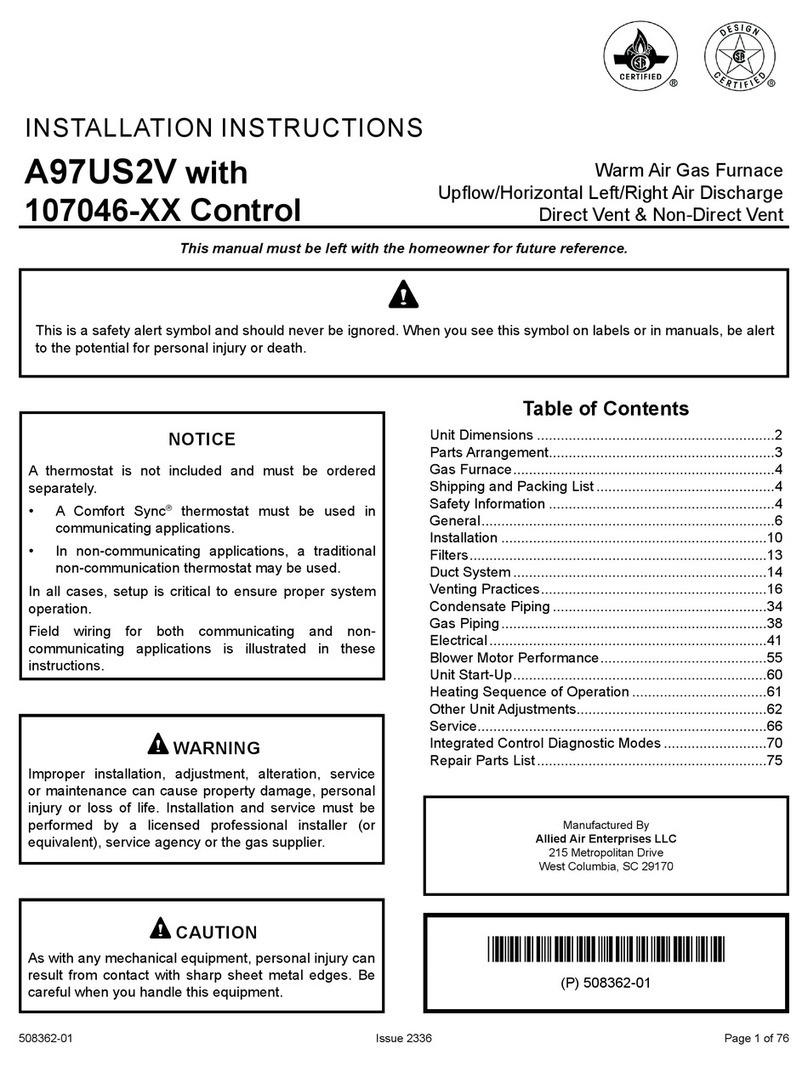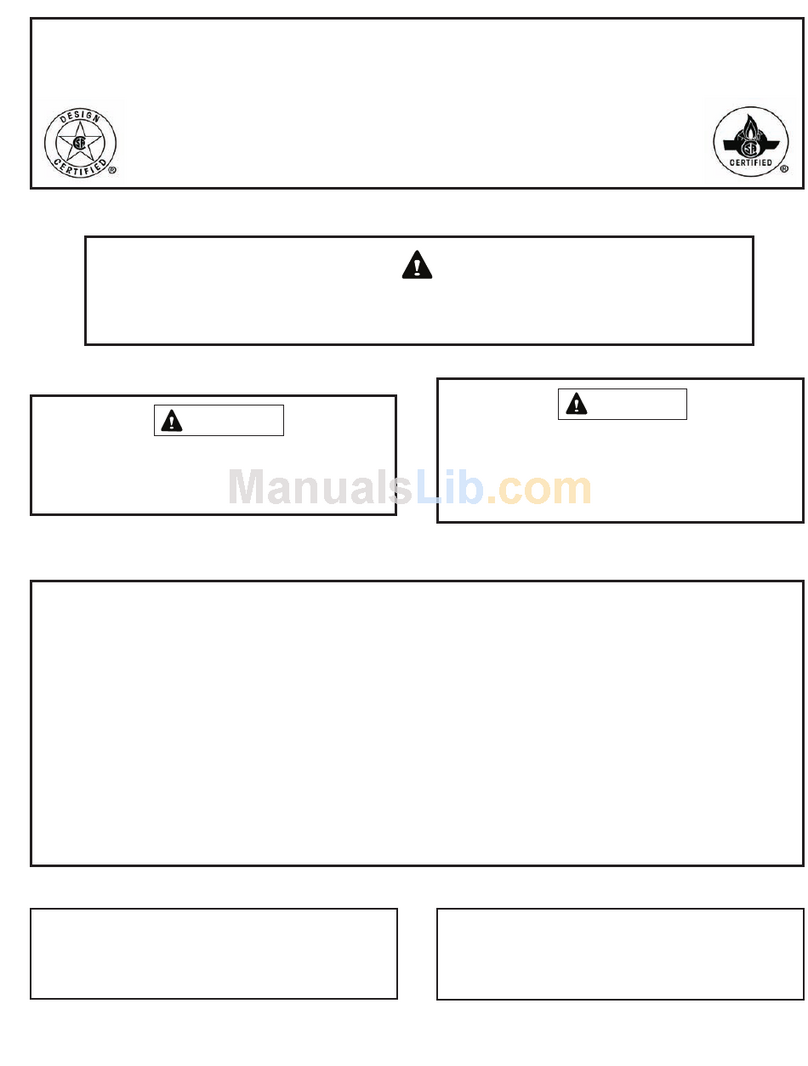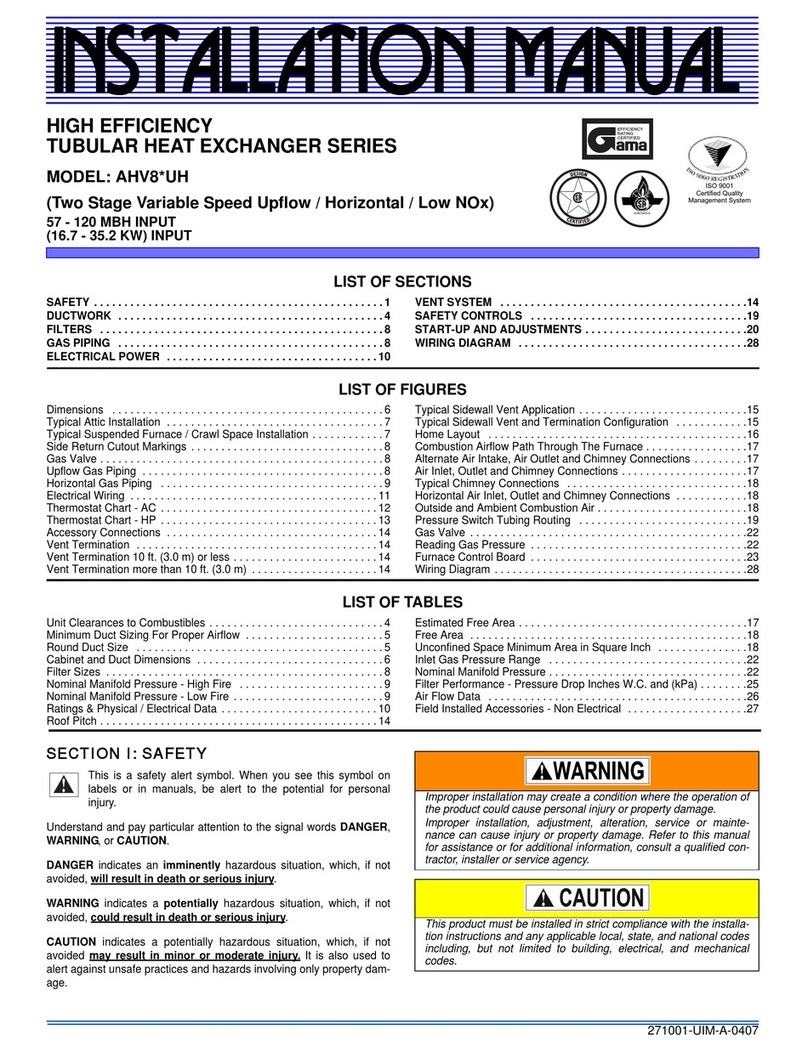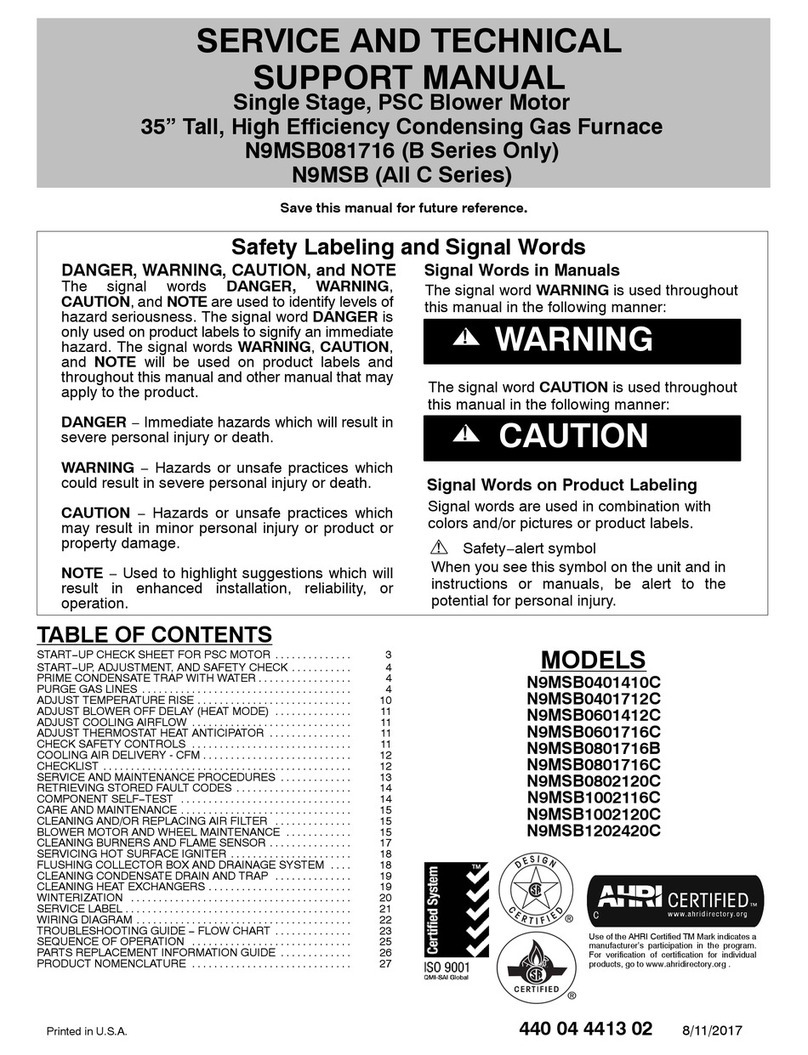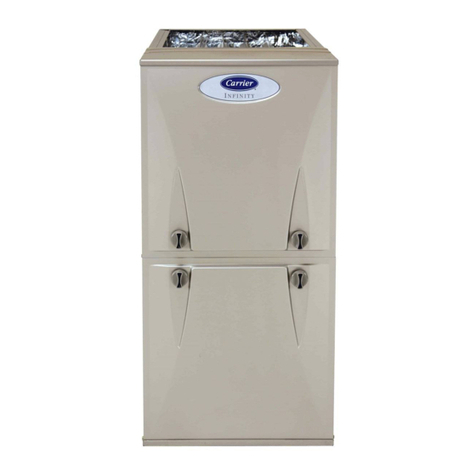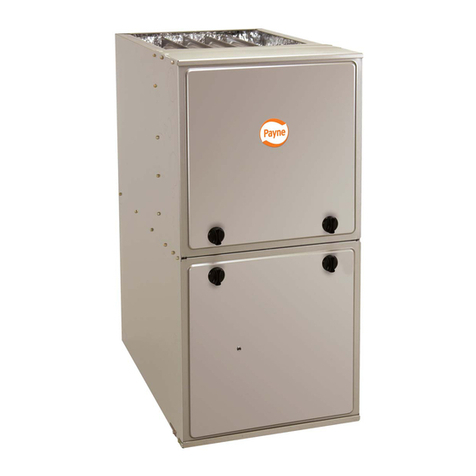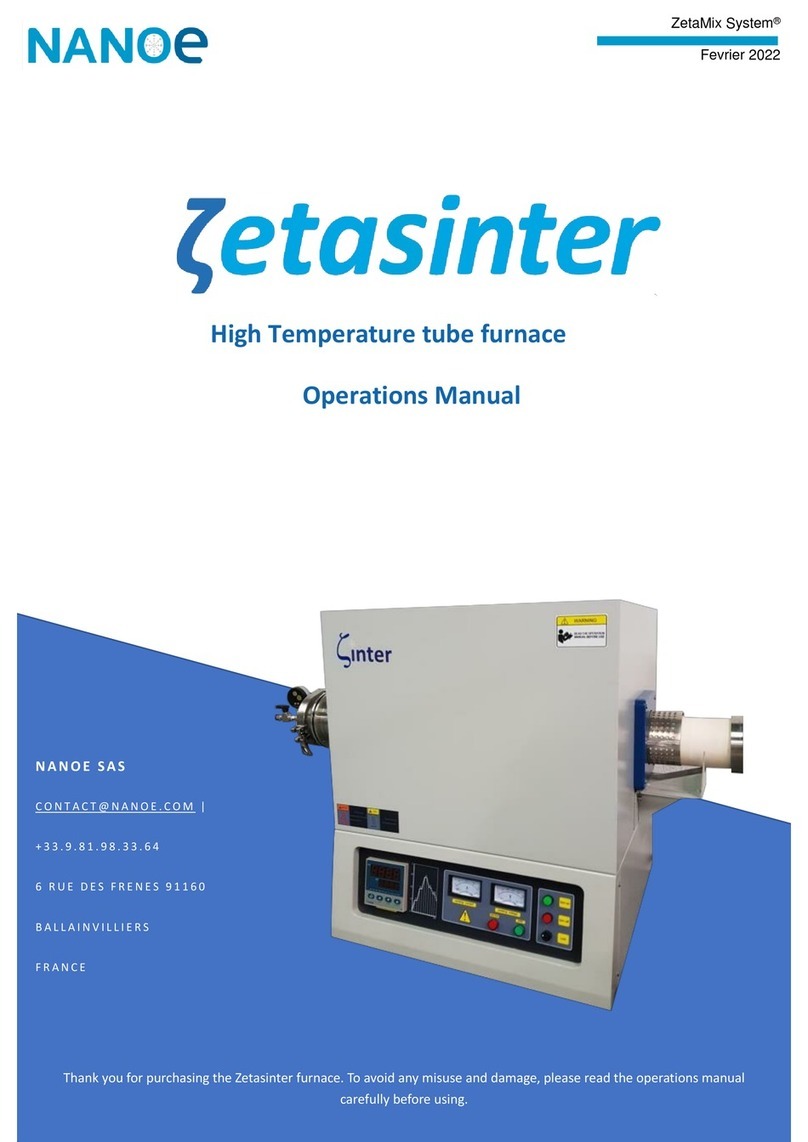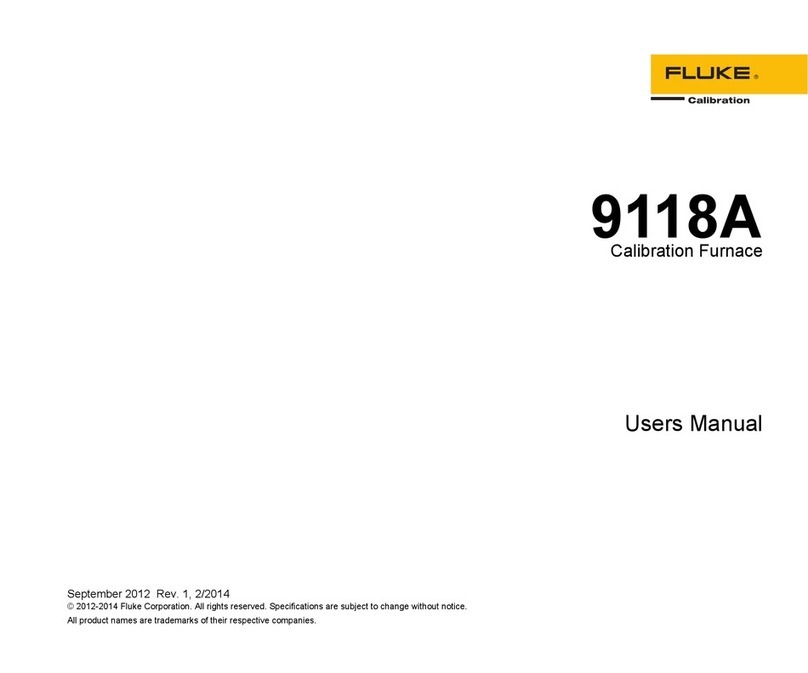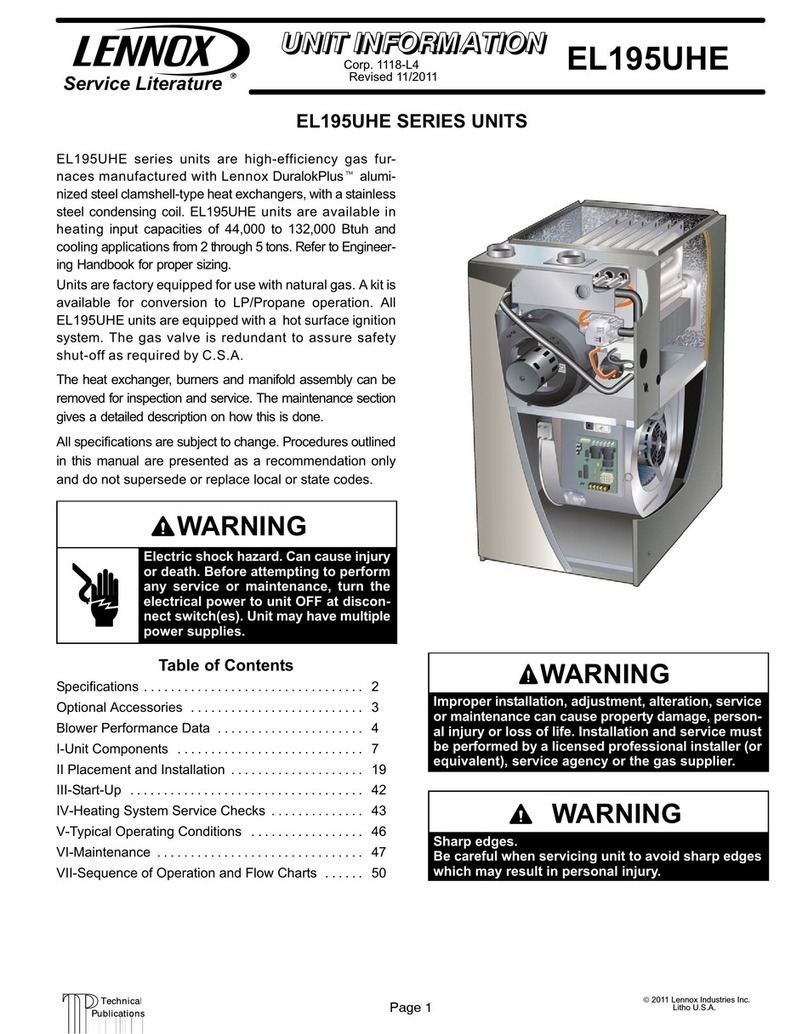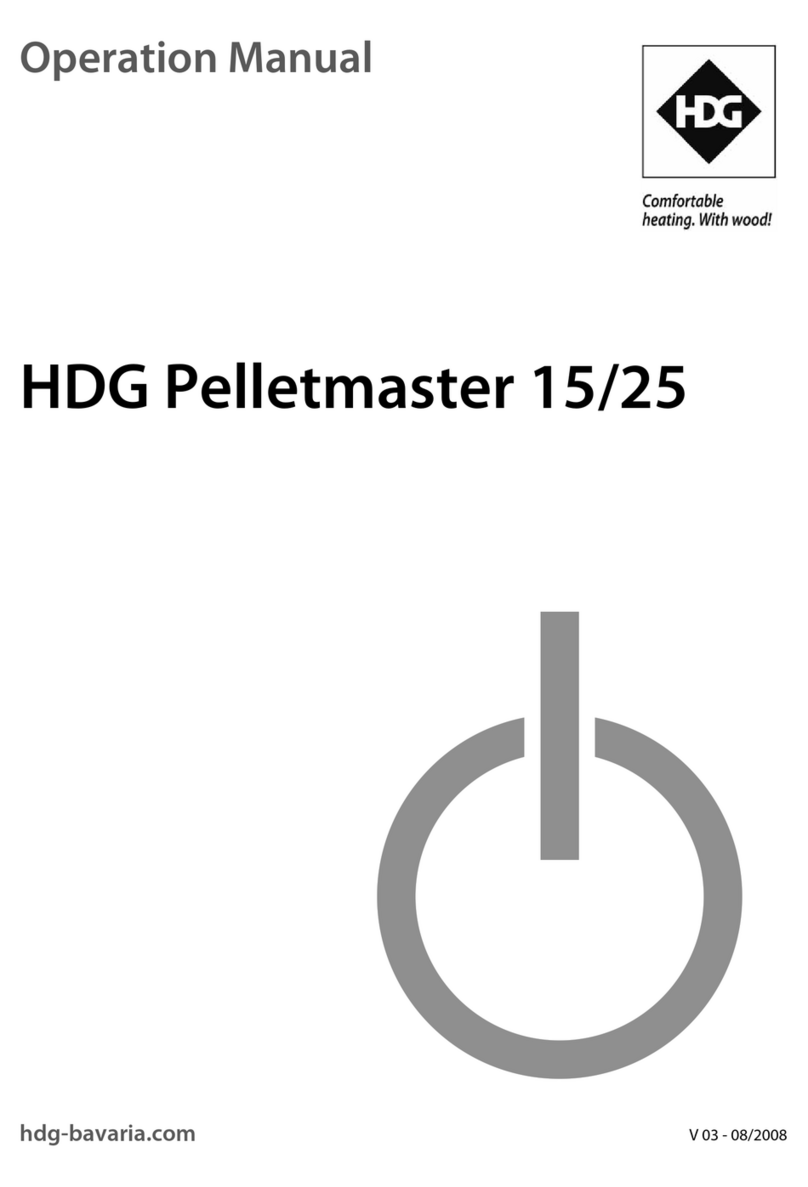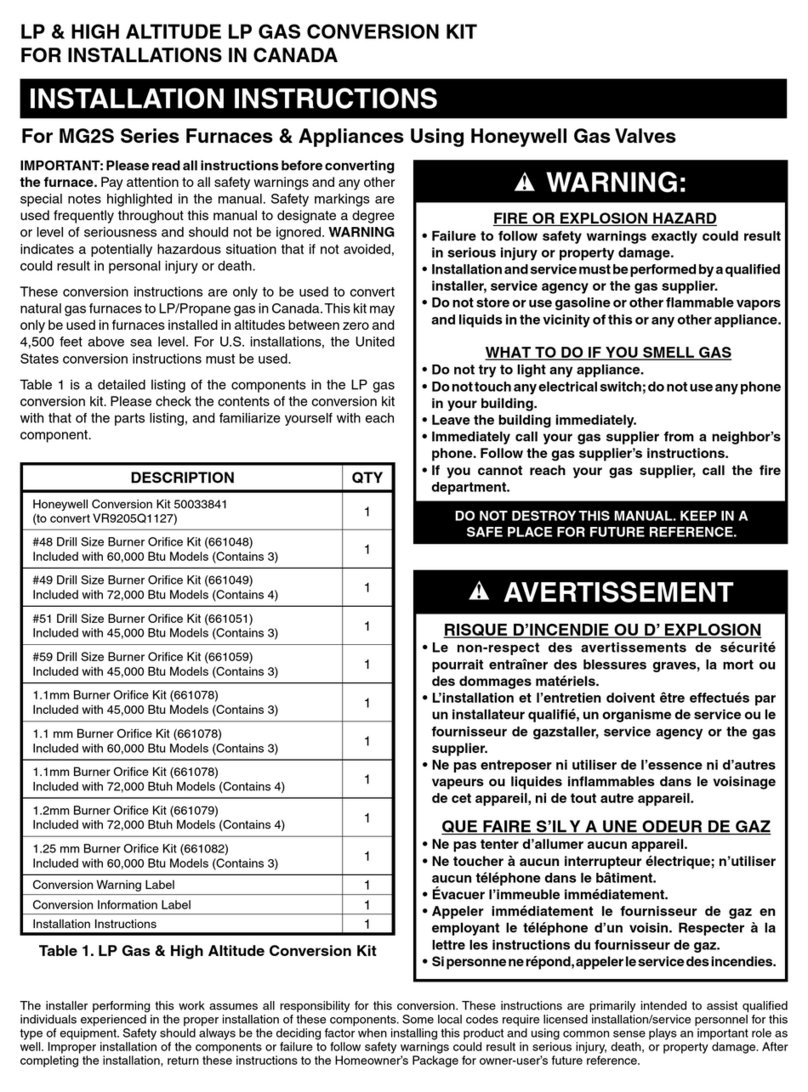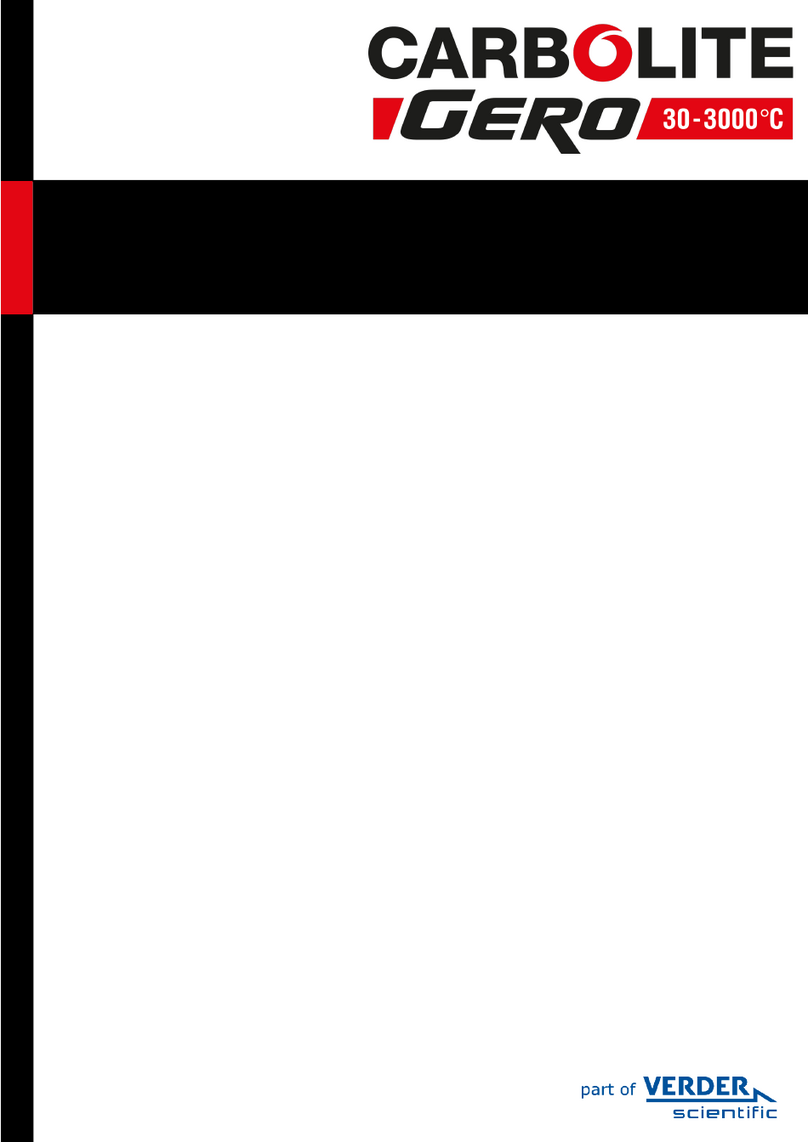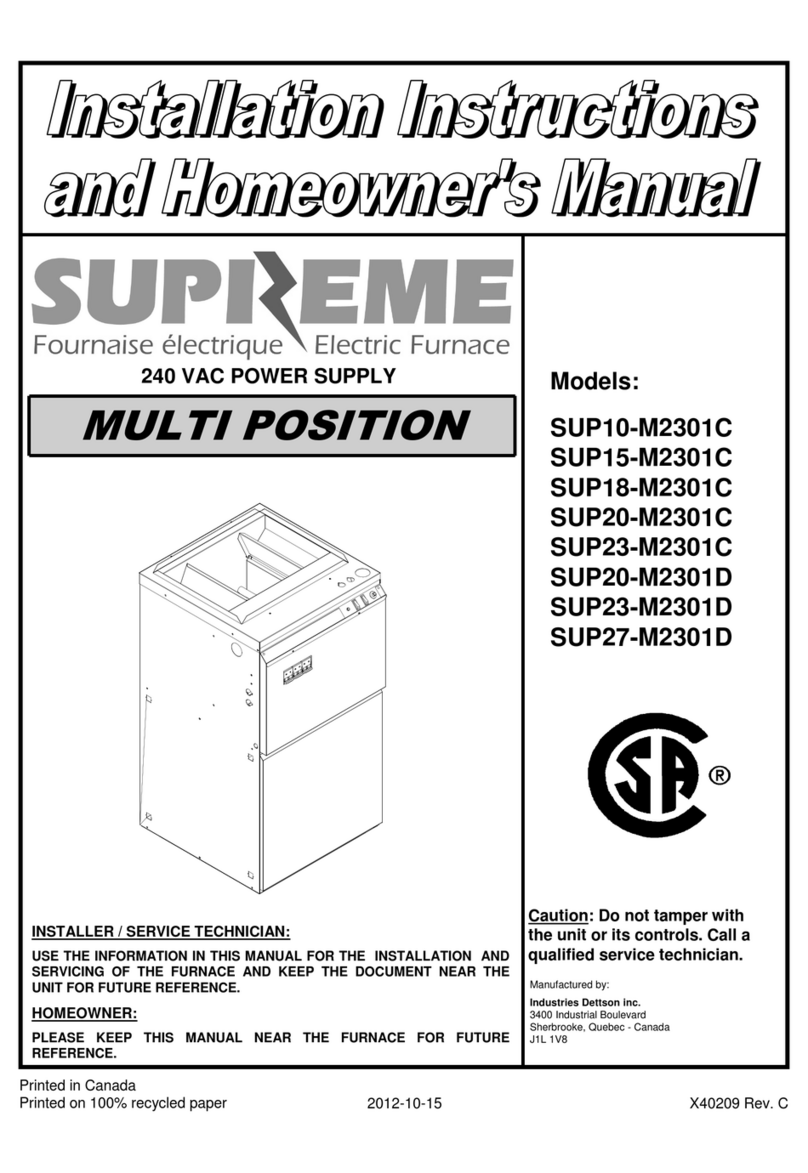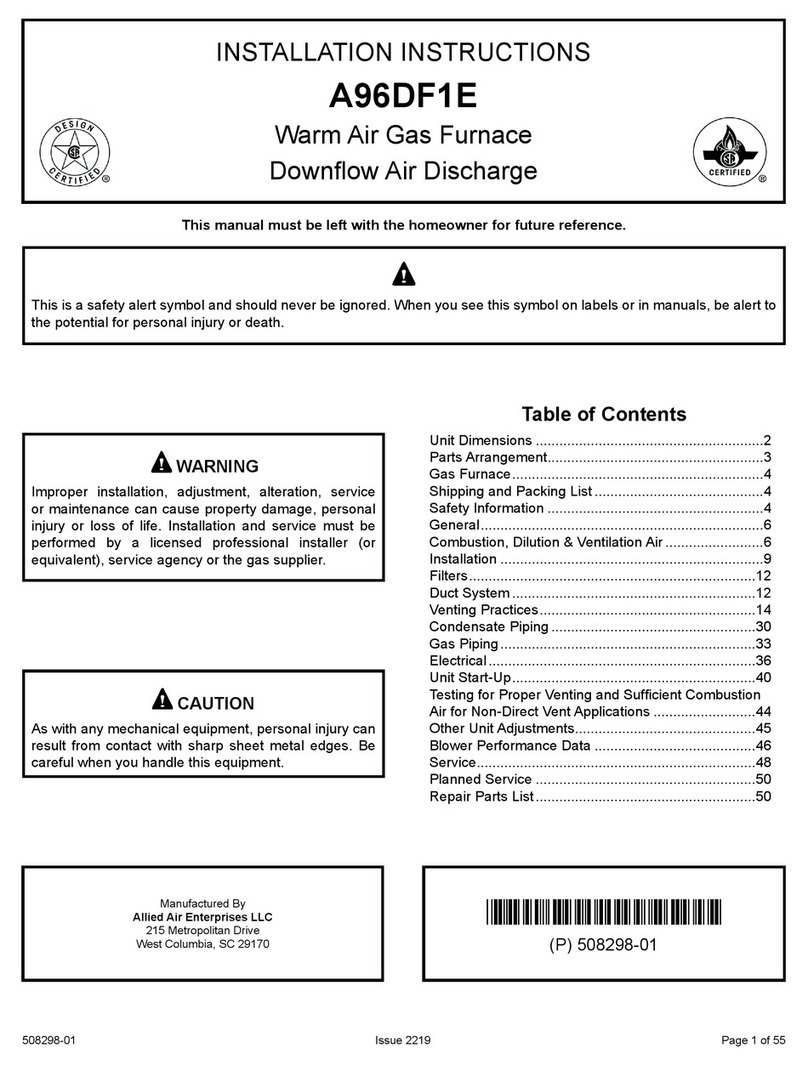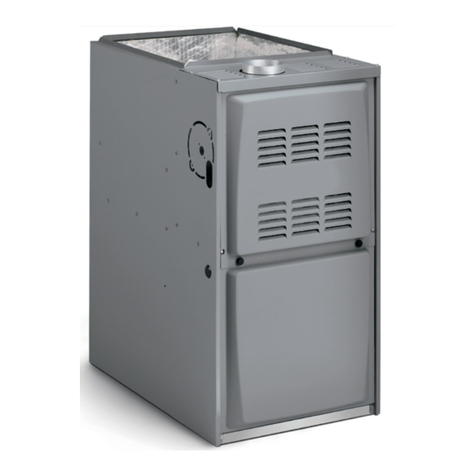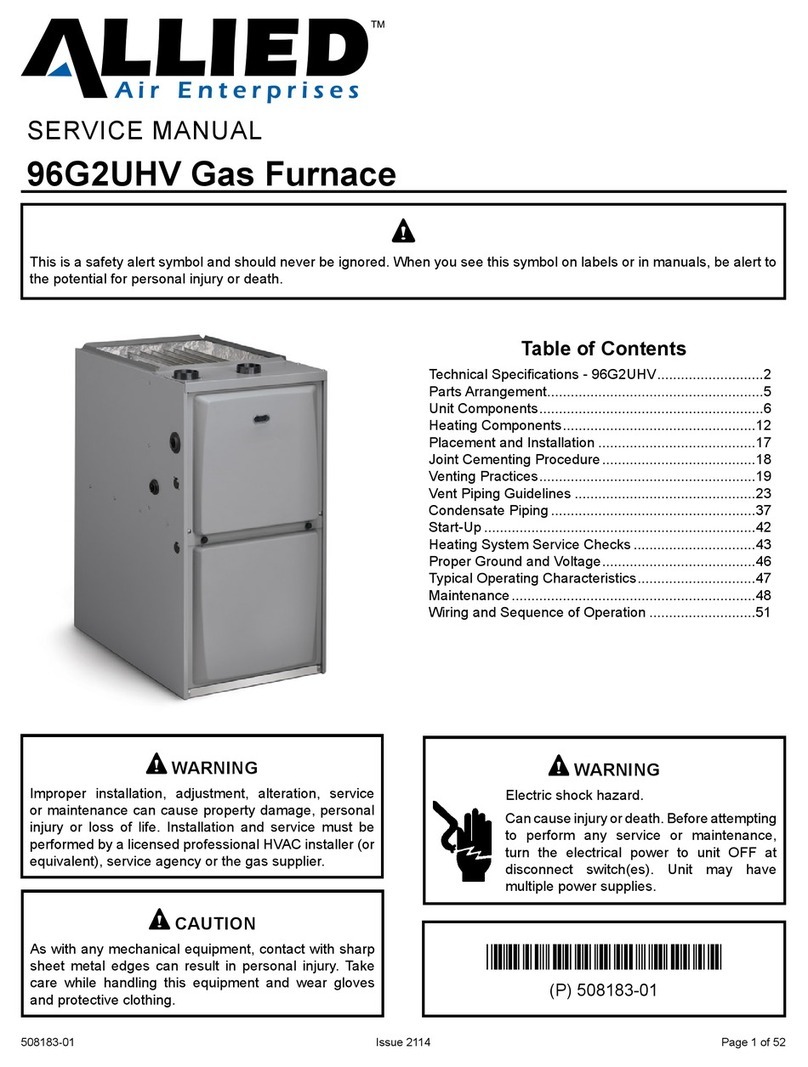
508420-01 Issue 2345 Page 9 of 75
Pin # Function
1Not Used
2High Fire Pressure Switch
3Rollout Switch In
4Ground
524V Hot
6Primary Limit In
7Gas Valve
8Gas Valve Common
9 24V Neutral
10 Ground
11 Primary Limit Switch Out
12 Low Fire Pressure Switch
Table 1. Control 12-Pin Terminal Designation
Pin # Function
1Data Input From Motor
2Common
3Not Used
4Data Output To Motor
55 Volt Bias Supply
6Not Used
Table 2. Control 6-Pin Terminal Designation
Electronic Ignition
At the beginning of the heat cycle the integrated control
monitors the low re combustion air inducer pressure
switch. The control will not begin the heating cycle if the
low re pressure switch is closed (by-passed). Likewise
the control will not begin the high re heating cycle if the
high re pressure switch is closed, and will remain in low
re heat. However, if the high re pressure switch closes
during the low re heat pre-purge, the control will allow high
re heat. Once the low re pressure switch is determined
to be open, the combustion air inducer is energized on
ignition speed. When the dierential in the pressure
switch is great enough, the pressure switch closes and a
15-second pre-purge begins. If the switch is not proven
within 2-1/2 minutes, the inducer is de-energized and the
control will initiate vent calibration. If the vent calibration is
unsuccessful the control goes into a 5 minute delay. The
control will attempt vent calibration 3 more times before
going into a 1 hour soft lockout. After the 15 second pre-
purge period the ignitor warms up for 20 seconds. The gas
valve then opens for a 4-second trial for ignition. The ignitor
stays energized during this trial until ame is sensed. If
ignition is not proven during the 4-second trial for ignition,
the control will try four more times with an inter purge
and warm-up time between trials of 35 seconds. After a
total of ve trials for ignition (including the initial trial), the
control goes into Watchguard-Flame Failure mode. After a
60-minute reset period, the control will begin the ignition
sequence again.
Thermostat Selection Modes
See Table 3 for DIP switch settings
The control can be made to operate in three modes: variable
capacity, three-stage timed or two-stage. The variable
capacity and two-stage modes are only operational with
a two-stage thermostat. The thermostat selection is made
using dip switches one and / or two (Figure 4) and must be
positioned for the particular application.
Variable Capacity
Using a two-stage thermostat the system will operate in a
variable capacity sequence mode. In this mode, the control
will vary the ring rate anywhere between 35% and 100%
of full capacity. The indoor blower will be automatically
adjusted accordingly to provide the appropriate airow
at any rate. On the initial call for low re, the furnace will
operate at 35% and will remain there until the heat call is
satised or a call for high re is initiated. If there is a call for
high re the rate will increase by 10% if the current rate is
above 60%. However, if the current rate is below 60% the
rate will increase to 70%. After this initial rate increase to
70% capacity, the furnace will increase rate by 10% every
5 minutes while a high re heat call is present. If the high
re heat call is satised but the low re heat call is still
present, the furnace will remain at the current ring rate
until the demand is satised or another call for high re is
initiated.
Three-Stage Timed Operation
Using a single-stage thermostat the system will operate
in a three stage timed mode. Upon a call for heat and a
successful ignition, the combustion air inducer will operate
at 35% and the indoor blower will adjust to the appropriate
cfm. After a eld selectable 7 or 12 minute delay period,
the inducer RPM will increase and the unit will operate at
70%. The indoor blower will adjust to the appropriate cfm.
After a factory set non-adjustable 10 minute delay expires
the furnace will increase rate to 100%. The indoor blower
will adjust to the appropriate cfm.
Two-Stage Operation
The system will also operate in conventional two-stage
mode. While in two-stage mode, the furnace will re on
low re (70% rate). The combustion air inducer will operate
at 70% and the indoor blower will adjust to the appropriate
cfm. The unit will switch to high re on a W2 call from the
thermostat. After a 30 second recognition period (during
which the integrated control will receive a continuous W2
call) expires the furnace will increase to 100% rate. The
inducer will increase to 100% speed and the indoor blower
will adjust to appropriate cfm. If there is a simultaneous
call for rst and second stage heat, the unit will re on
rst stage heat and switch to second stage heat after 30
seconds of operation.
